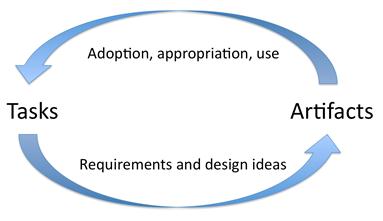“Easy to learn, easy to use”
The original article written by professor John m. Carroll
Human computer interaction originated from computer science in the early 1980’s, it has since then grown to include a large number of other disciplines ranging from cognitive sciences and engineering to informing design and development. It arrived just as personal computers where becoming popular and represented the ideal platform for combatting the over complication of computer software or “software crisis” in the late 1970’s and by focusing on non-functional requirements such as usability and maintainability helped to shape and define how we interact with computers today. In its modern day form it can be considered to be an umbrella term for “fun, wellbeing, collective efficacy, aesthetic tension, enhanced creativity, flow, support for human development, and others” or in short the marriage of IA, UI and UX.

However HCI has now moved beyond just simple desktop computer interactions and now deals with the three main challenges facing developers, designers, computer scientists, communication scientists and everyone in-between. First going beyond the desktop interface as its obvious weakness to scalability became apparent the introduction and use of search functions. Second the huge impact of the internet not just on the way it works but also how this effects society, As it is now known social computing the ability to communicate not just with computers but rather through computers can be considered possibly one of the most important aspects of HCI. The third is the great variety of devices now on offer and ubiquitous computing found in nearly every theatre of life.
Ultimately “HCI is about understanding and critically evaluating the interactive technologies people use and experience. But it is also about how those interactions evolve as people appropriate technologies, as their expectations, concepts and skills develop, and as they articulate new needs, new interests, and new visions and agendas for interactive technology.”
The task-artefact cycle

As HCI involves studying and analysis both sides of the development, both the users and how they use the artefacts alongside the artefacts themselves one of the core ideas arising from HCI is the task-artefact cycle. This is that as artefacts are created to solve the problems which has arisen this in term leads to them being used and creating a whole new level of opportunities whether positive or negative. The changing nature of this cycle means that HCI thrives on the “new” and that predicting the future is less like working out an equation and more like “world history”
HCI has huge parallels with HCD in terms of how it seems to flow and iterate, seeing change and new designs as a good thing and stagnation as bad, it recognises that we may be working with what seems like good technology to us but may actually be simply a reworked and optimised version of a miss step made in the design over two decades ago. HCD should act as good partner when viewed in terms of HCI as it is naturally built as a problem solving methodology which works alongside the task-artefact cycle.